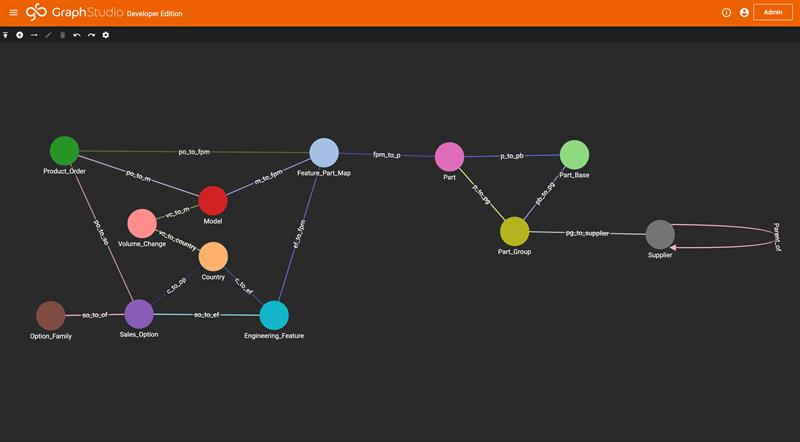Complex supply chains are a feature of many companies and involve multiple manufacturing sites, hundreds of suppliers, thousands of products and hundreds of thousands of parts. The result is billions of interconnected dependencies which must be planned, monitored and managed with the aim of controlling logistics, adding value, and creating competitive advantage, all while synchronising supply and demand and measuring the overall performance of the system.
Beyond a certain level of complexity, managing these long chains of relationships using traditional enterprise resource planning (ERP) systems can be problematic because the underlying architecture of their databases is not optimised for modelling relationships. However, help is at hand with graph databases which allow you to model myriad relationships and dependencies in a way that closely mirrors real life, opening the door to new ways of managing supply chains.
The supply chain challenge
It takes many disciplines within a company to manage the supply chains that feed into the production process, a challenge made more complex when you must identify and mitigate multiple disruptions which could cause:
- Delays in the delivery of critical components
- Oversupply of components
- Unplanned logistics costs
- Assembly lines sitting idle
- Loss of sales due to failure to meet demand
- Payment of contract penalties to suppliers
Supply chains are particularly sensitive to changes in consumer demand. In the automobile industry, for instance, supply chain managers make predictions, based on experience and marketing data, on how many of each option will be chosen for next year’s model, but all of that can be thrown out the window if a feature becomes less fashionable.
Fine tuning the supply chain not only yields savings that represent a direct contribution to the bottom line, it also helps de-risk the business.

And yet the tools which many businesses use to manage supply chains do not address the problem in its entirety. For instance, traditional supply chain management solutions handle supply and demand fluctuations and adjust inventory and manufacturing targets, but they typically do not integrate with the commercial side to look at volume purchasing agreements with suppliers and understand the impact of excess inventory from those suppliers.
Some businesses use ERP systems to manage supply chains, but even so, supply chain managers can end up having to link various systems, with tools they have built themselves, to join data sources and extract the information they need. Data is even exported to spreadsheets, a cumbersome solution that also risks vital business intelligence being hidden, or even lost, in departmental silos.
Some organisations turn to relational databases and SQL to model their supply chains. While a relational database is well suited to certain tasks such as data retrieval and aggregation, analysis of the complex interconnectedness of a supply chain is not one of them. The need to perform a SQL table join for each link in the chain that you want to analyse quickly becomes the limiting factor for a relational database.
Graph database solutions can address these problems and help you develop deeper insights into your supply chain.
A graph-shaped problem
A graph database builds on graph mathematical theory in which data is represented as a network of vertices and edges. The vertices represent objects while edges represent the relationships between them. An object can be related to an unlimited number of other objects via any number of edges.
It means that any set of relationships in a supply chain can be represented in a way that closely mirrors real life. A supply chain graph would contain many types of vertices such as suppliers, transportation providers, warehouses and assembly sites but also components, services, and products. And there are many types of edges (or relationships) including ‘produces’, ‘supplies’, ‘contracts with’, ‘delivers’ and so on. An example of a basic relationship we can build from this is: supplier A produces component X which is collected by courier B who delivers it to factory C which uses it to make product Y. This simple construct then forms the basis for building complex graphs which in turn enables deep, multi-dependency analysis.
This makes it possible to track every individual part through its entire lifecycle, from supplier through manufacturing to finished product.
The graph is a network view "digital twin" of your real-life supply chain, and as such, it becomes a framework from which you can hang all your data and understand how it all relates. This representation of the supply chain also makes it more intuitive for developers, reducing the time to create new solutions. And it opens the door to a range of powerful graph algorithms to help supply chain managers realise efficiency gains. Algorithms such as shortest path, closeness, and connectedness can uncover previously hidden relationships and help you manage complex dependencies in real-time.
Graph enables complex analysis that other database systems do not support so you can model and manage changes in product mixes, forecasts, and suppliers. In short, it opens the door to a new era of data management and analysis. An era that provides innovative manufacturers with the insights they need to gain a strong advantage over the competition.









